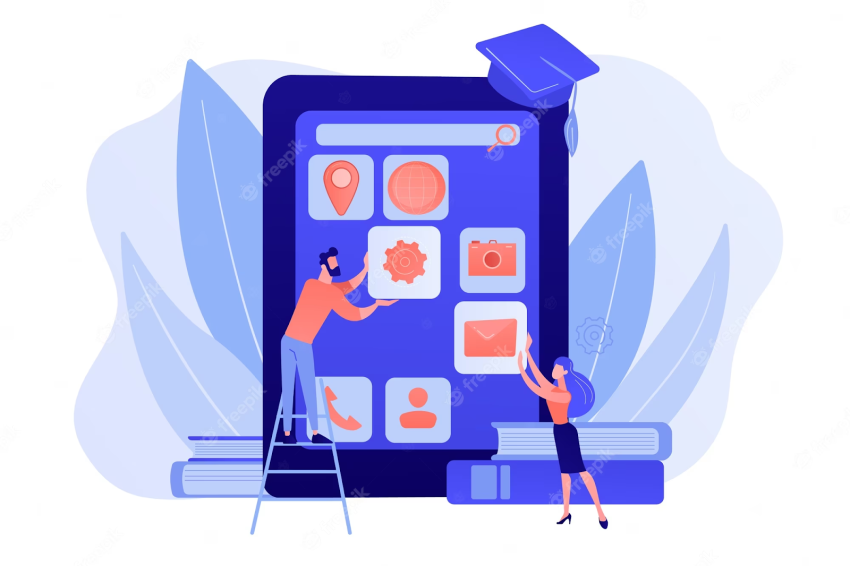Introduction
In the digital age, e-learning has become a popular and effective way to acquire knowledge and skills. As the demand for convenient and accessible education continues to grow, creating an e-learning app can be a lucrative venture. This article will guide you through the steps, pricing considerations, and essential features of developing an e-learning app.
Understanding the E-Learning App Market
Before diving into the development process, it’s crucial to understand the e-learning app market. Research your target audience, identify their needs and preferences, and assess the competition, including elearning app development companies in Dubai. Analyzing market trends and user behavior will help you tailor your app to meet the demands of your potential users effectively.
Key Features of an E-Learning App
To create a successful e-learning app, it’s essential to incorporate key features that enhance the user experience. Some crucial features to consider include:
- User Authentication: Allow users to create accounts and log in securely.
- Course Management: Organize courses into categories and enable users to enroll, track progress, and access course materials.
- Multimedia Content: Support various multimedia formats such as videos, presentations, and interactive quizzes.
- Communication Channels: Facilitate student-instructor and student-student interaction through discussion forums, messaging, and live chat.
- Progress Tracking: Provide tools for users to monitor their learning progress, including completed courses, achievements, and certificates.
- Push Notifications: Send timely updates and reminders to keep users engaged and informed.
- Feedback and Rating System: Allow users to provide feedback and rate courses, fostering a sense of community and quality assurance.
Step-by-Step Guide to Creating an E-Learning App
Now, let’s explore the step-by-step process of creating an e-learning app:
1. Identify your target audience and niche
Determine the specific group of learners you want to target and the subject areas you aim to cover. This will help you tailor your app’s content and features to meet their needs effectively.
2. Define the app’s purpose and objectives
Clearly outline the goals of your e-learning app. Are you focusing on professional skill development, academic courses, or hobby-based learning? Define your app’s purpose to align your development efforts accordingly.
3. Choose the right e-learning app development platform
Selecting the right app development platform is crucial for building a robust and scalable e-learning app. Consider factors like customization options, security features, ease of use, and integration capabilities.
4. Design an intuitive user interface
Create a user-friendly interface that allows learners to navigate the app effortlessly. Pay attention to visual appeal, readability, and accessibility across various devices and screen sizes.
5. Develop the app’s backend infrastructure
Build a robust backend infrastructure that can handle user management, course data, and other essential functionalities. Ensure scalability and security to accommodate future growth.
Also Read: Top 10 Mobile App Development Companies in Dubai
6. Implement essential features and functionality
Integrate the key features discussed earlier into your e-learning app. Prioritize functionality that enhances the learning experience and engages users effectively.
7. Test and debug the app
Thoroughly test your app to identify and fix any bugs or usability issues. Conduct both functional and usability testing to ensure a smooth user experience.
8. Launch and promote your e-learning app
Once you’re satisfied with your app’s performance, launch it on relevant app stores and marketplaces. Develop a marketing strategy to increase awareness, attract users, and encourage engagement.
Factors Affecting the Cost of E-Learning App Development
Several factors influence the cost of developing an e-learning app. These include:
- Complexity of Features: The more sophisticated the features and functionalities, the higher the development cost.
- Design and User Interface: Customized and visually appealing designs may require additional investment.
- Platform Compatibility: Developing for multiple platforms, such as iOS and Android, can increase development costs.
- Integration with Third-Party Services: Integrating APIs for payment gateways, content delivery, or analytics may incur additional expenses.
- Maintenance and Updates: Ongoing maintenance and updates to ensure app performance and security can contribute to long-term costs.
Conclusion
Creating an e-learning app can be a rewarding endeavor in today’s digital landscape. By following the step-by-step guide provided in this article, considering the key features, and understanding the cost factors, you can develop an engaging and successful e-learning app. Remember to continuously adapt and improve your app based on user feedback to ensure its long-term success.
Also Read: Top 10 Mobile App Development Companies in Dubai
FAQs
- Can I create an e-learning app without coding knowledge?
Yes, several e-learning app development platforms offer no-code or low-code options that require minimal coding knowledge.
- How long does it take to develop an e-learning app?
The development timeline depends on factors such as app complexity, features, and team size. On average, it can take several months to develop a fully functional e-learning app.
- What are some popular e-learning app development platforms?
Some popular e-learning app development platforms include Moodle, Canvas, Udemy, and Teachable.
- Is it possible to integrate third-party APIs into an e-learning app?
Yes, integrating third-party APIs allows you to enhance your app’s functionality by integrating services like payment gateways, video hosting, and analytics.
- How can I monetize my e-learning app?
You can monetize your e-learning app through methods such as course subscriptions, in-app purchases, advertising, or partnerships with educational institutions.

